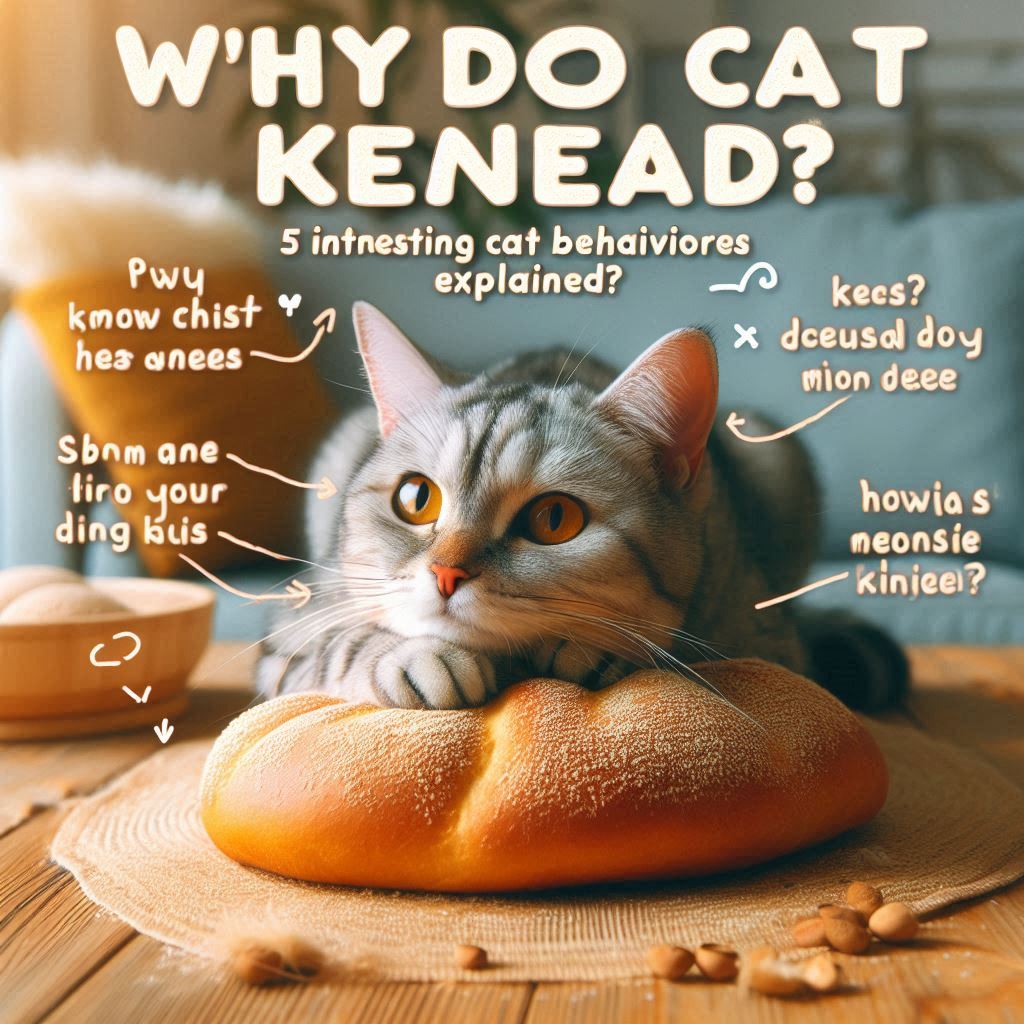Cats are mysterious creatures, and their behaviors often fascinate and puzzle their owners. From the gentle kneading of paws to the soft purring, each action your feline friend does carries meaning. In this article, we’ll dive into one of the most adorable and common cat behaviors—kneading—and explore four other fascinating behaviors that reveal how cats communicate and interact with their world. Understanding these behaviors will help you bond deeper with your furry companion.
1. Why Do Cats Knead?
If you’ve ever watched a cat gently push its paws in and out on a soft surface—whether it’s your lap, a blanket, or a pillow—you’ve witnessed kneading. Sometimes called “making biscuits,” this behavior can seem both soothing and curious.
Origins in Kittenhood
Kneading starts early in a cat’s life when kittens instinctively knead their mother’s belly to stimulate milk flow during nursing. This comforting action helps kittens feel safe and secure.
Sign of Contentment and Comfort
Adult cats knead when they feel relaxed, happy, or safe. It’s a way to self-soothe and express contentment. When your cat kneads on your lap, it’s a clear sign they trust you and feel comfortable around you.
Marking Territory
Cats have scent glands in their paws, so kneading may also serve as a way to mark territory. By pressing their paws, they leave their unique scent behind, signaling that this spot or person belongs to them.
2. Cat Purring: What Does It Really Mean?
Purring is one of the most recognizable cat sounds, but it’s more complex than just a sign of happiness.
Reasons Cats Purr
While cats often purr when they’re content—such as during petting or while cuddling—they also purr to comfort themselves when stressed, anxious, or in pain. Purring can even promote healing by releasing endorphins.
Emotional Impact on Humans
Studies show that cat purring has a calming effect on humans and may reduce stress and blood pressure. This mutual benefit strengthens the human-cat bond.
3. Cat Head-Butting (Bunting) Explained
Head-butting, also known as bunting, is a behavior where cats gently press their heads against people or objects.
Social Bonding
Cats use this behavior to show affection and trust. By head-butting you, your cat is including you in their social group and sharing their scent.
Marking Territory
Facial glands around the cat’s head release pheromones during bunting, marking you as “safe” and reinforcing your bond.
4. Why Do Cats Bring “Gifts”?
If your cat has ever left a dead mouse, insect, or random household object near your door or bed, you might have wondered why.
Hunting Instinct
Cats are natural hunters, and bringing “gifts” is a way to share their catch with their family. In the wild, mother cats bring prey to teach kittens how to hunt.
Expression of Affection
Domestic cats may bring presents as a way of showing love or contributing to their “family.”
5. The “Slow Blink” and What It Means
The slow blink is a subtle but powerful way cats communicate.
Trust and Affection
When your cat slowly closes and opens their eyes while looking at you, it’s a sign of trust and relaxation.
How to Respond
You can strengthen your bond by slowly blinking back at your cat, signaling you feel safe and affectionate too.
Conclusion
Cats use a variety of behaviors to express their emotions and communicate with us. From kneading to slow blinking, each action has deep roots in their biology and social nature. By paying attention to these behaviors, you’ll better understand your feline friend’s needs and feelings, creating a stronger and more loving relationship.
If you enjoyed learning about these fascinating cat behaviors, stay tuned for more insights and tips on caring for your beloved pets.
